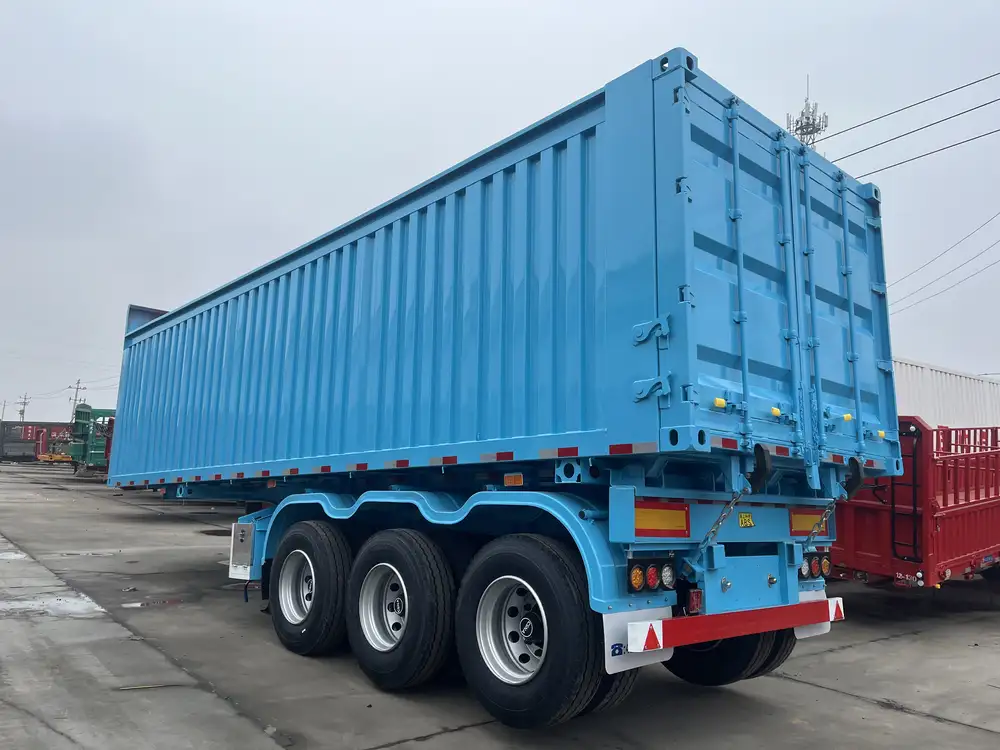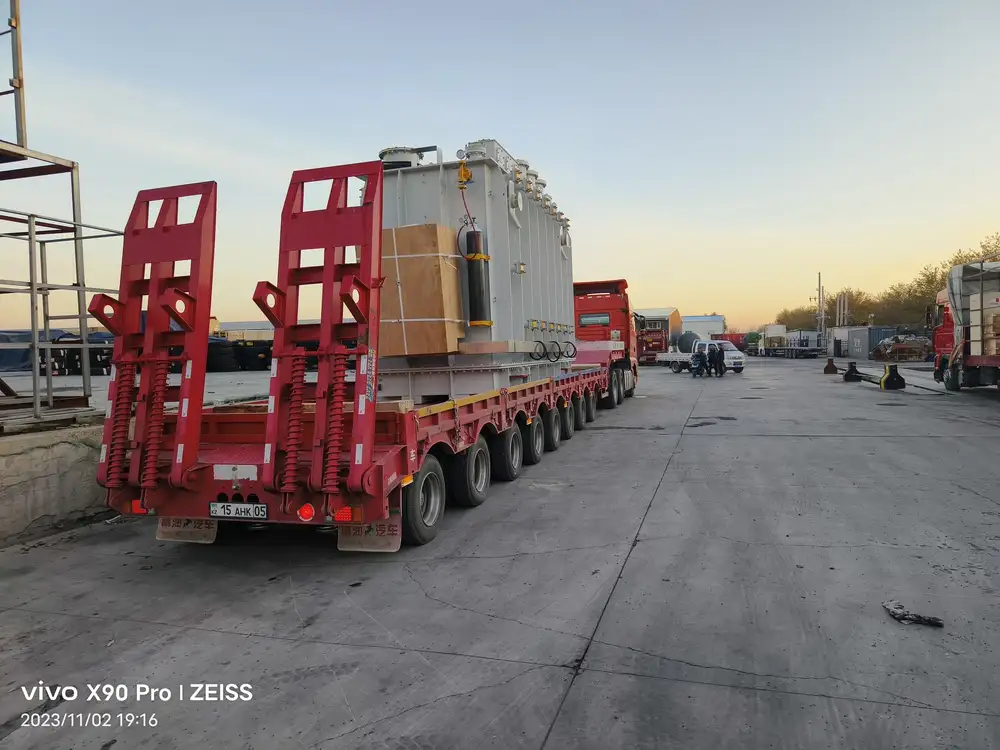Introduction to 5th Wheel Hitches
5th wheel hitches are renowned for their versatility and robust design. Primarily installed in trucks for towing large trailers, they consist of a hinged platform that allows for substantial freedom of movement. This unique configuration provides enhanced stability while maneuvering, particularly with heavy loads. However, a common query arises among users concerned with operational efficacy: Can a 5th wheel hitch pull an empty semi trailer? To adequately address this query, we will delve into the mechanics of 5th wheel hitches, the dynamics of semi-trailer towing, and important considerations for safety and performance.
The Mechanics of 5th Wheel Hitches

Structure & Design
5th wheel hitches are usually installed in the bed of a truck. This design enables weight distribution over the truck’s rear axle, preventing excessive strain on the tow vehicle and improving overall stability. The primary components include:
- Kingpin: The coupling point that connects the trailer to the hitch.
- Hitch Head: This part accommodates the kingpin, allowing for articulation during turns.
- Jaw Mechanism: Secures the kingpin in place.
Different Hitch Types
There are various types of 5th wheel hitches designed for specific uses, including:
- Standard Hitches: Commonly used for general towing purposes.
- Sliding Hitches: Ideal for short-bed trucks. They slide backward on sharp turns, preventing the trailer from hitting the cab.
- Gooseneck Hitches: Designed for heavier loads, offering a different attachment point.
Understanding these variants is essential when choosing the right hitch for a semi-trailer.
Evaluating the Capability of a 5th Wheel Hitch to Tow an Empty Semi Trailer

Towing Capacity Assessment
Towing an empty semi trailer with a 5th wheel hitch involves understanding the weight ratings and specifications of both the hitch and the towing vehicle. Most trucks equipped with 5th wheel hitches can tow substantial weights, often exceeding 20,000 lbs. However, specifications can vary significantly based on:
- Truck Make and Model: Some trucks are designed for heavy-duty hauling.
- Hitch Rating: Every hitch has a maximum weight rating that should not be exceeded.
- Trailer Design: The weight of a semi trailer can vary based on its design and materials used.
Weight Comparison Table
| Truck Type | Maximum Towing Capacity | Typical 5th Wheel Hitch Rating |
|---|---|---|
| Light Duty Truck | Up to 12,000 lbs | 16,000 – 20,000 lbs |
| Medium Duty Truck | 12,000 – 20,000 lbs | 20,000 – 30,000 lbs |
| Heavy Duty Truck | Over 20,000 lbs | 30,000 lbs and above |
Factors Impacting Towing Performance
While pulling an empty semi trailer may seem straightforward, several external factors can influence performance:
- Aerodynamics: An empty semi trailer may still create considerable drag, impacting fuel efficiency and acceleration.
- Load Distribution: Properly distributing any weight in the trailer is crucial. Even if empty, an unbalanced trailer may cause hazardous driving conditions.
- Tire Pressure: Underinflated tires on either the truck or trailer can lead to increased wear and potential blowouts.

Legal and Safety Considerations
Understanding the legal framework regarding towing is paramount. Regulations can vary by state and country, influencing:
- Weight Limits: Ensure your combined vehicle and trailer weight complies with local laws.
- Braking Systems: For trailers exceeding a certain weight, a braking system is often required for safe operation.
- Insurance and Liability: Verify that your towing setup is covered by insurance to avoid financial repercussions in case of an incident.
Advantages of Using a 5th Wheel Hitch for Towing Empty Semi Trailers
Enhanced Maneuverability
One of the standout advantages of utilizing a 5th wheel hitch is its superior maneuverability. The coupling point allows the trailer to pivot, enabling tight turns that would be challenging with traditional hitches. This characteristic becomes increasingly vital in urban environments or construction sites where space is often restricted.

Improved Stability
The design of a 5th wheel hitch naturally aligns the center of gravity of the load over the truck’s rear axle, which enhances stability and traction. This stability is particularly beneficial when pulling a large, but empty, semi trailer, as it reduces the risk of fishtailing.
Efficiency in Setup and Operation
5th wheel hitches facilitate quicker connection and disconnection compared to other hitch types. This efficiency is beneficial for users who may frequently switch between towing and standard use.
Limitations of Towing an Empty Semi Trailer with a 5th Wheel Hitch

Limitations in Weight Capacity
While a 5th wheel hitch can handle substantial loads, towing an unnecessarily heavy or improperly designed empty trailer can cause strain on the truck’s engine and drivetrain. It is crucial to ensure that the weight of the empty semi trailer falls within the specified limits of both the truck and the hitch.
Potential for Damage
Using a 5th wheel hitch to tow improperly loaded or heavy semi trailers can lead to increased wear and tear. Regular maintenance and pre-towing inspections become essential to avoid costly repairs down the road.
Maneuverability Challenges with Longer Trailers
Despite the enhanced maneuverability 5th wheel hitches provide, towing longer semi trailers can still present challenges, especially in narrow spaces or when reversing. Practice is vital to mastering the art of towing longer trailers safely.

Best Practices for Towing an Empty Semi Trailer
Pre-Towing Inspection
- Check Hitch Setup: Ensure that the hitch is securely attached and that the kingpin is properly seated.
- Evaluate Truck and Trailer Condition: Inspects air pressure, brakes, and lights.
Optimal Weight Distribution
Though the trailer may be empty, ensure that any cargo is evenly distributed. Utilize tie-downs or straps if necessary to secure items.

Driving Techniques
Adoping appropriate driving techniques can make a significant difference:
- Slow Starts: Gradually accelerate to avoid tire spin.
- Wide Turns: Anticipate turns, allowing ample space for the trailer.
- Braking Position: Begin braking earlier than usual to account for the extra length and weight.
Follow Local Regulations
Stay updated on towing regulations within your jurisdiction to ensure compliance. Knowledge of weight limits, licensing requirements, and hitch standards is crucial in avoiding penalties.
Conclusion
Understanding whether a 5th wheel hitch can pull an empty semi trailer intertwines a mix of mechanical knowledge, practical insights, and regulatory awareness. The inherent design of 5th wheel hitches allows them to handle varying loads with high levels of stability and maneuverability. However, attention must be paid to weight limits, operational techniques, and legal requirements to ensure safety and efficiency.

Moving Forward
For those in the trucking and hauling industry, embracing the capabilities of 5th wheel hitches can lead to greater operational flexibility and enhanced performance. By following best practices and adhering to guidelines, you can take full advantage of your 5th wheel hitch while towing an empty semi trailer. Whether you are a seasoned professional or a newcomer in the field, understanding your equipment is the key to successful towing and overall safety on the road.



